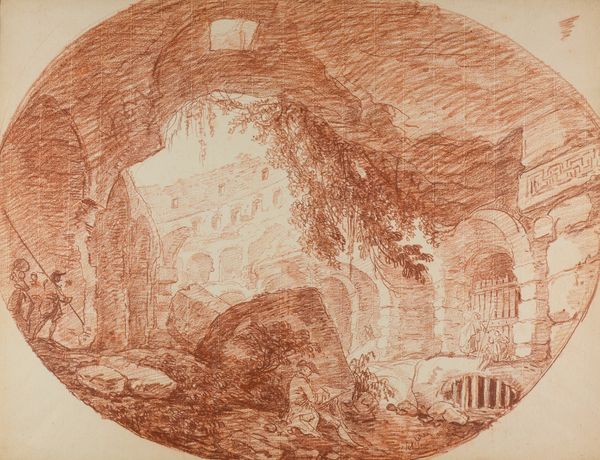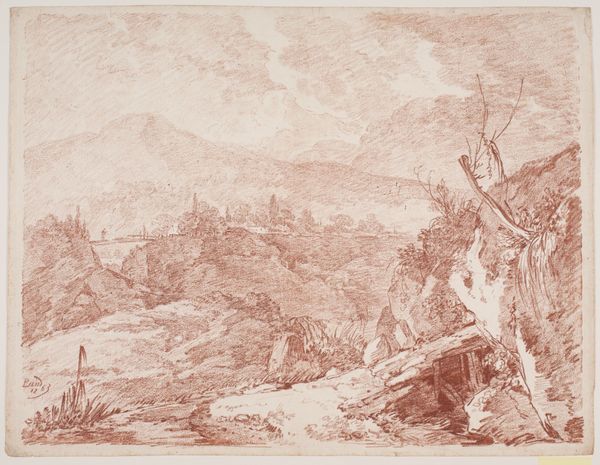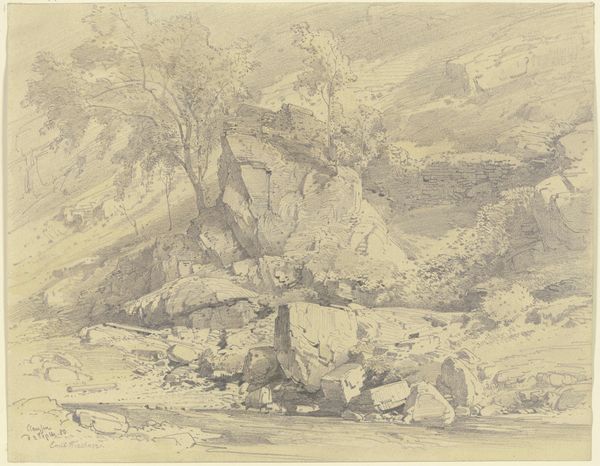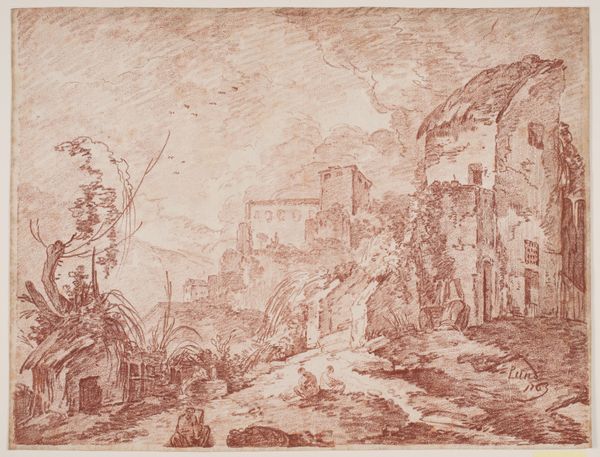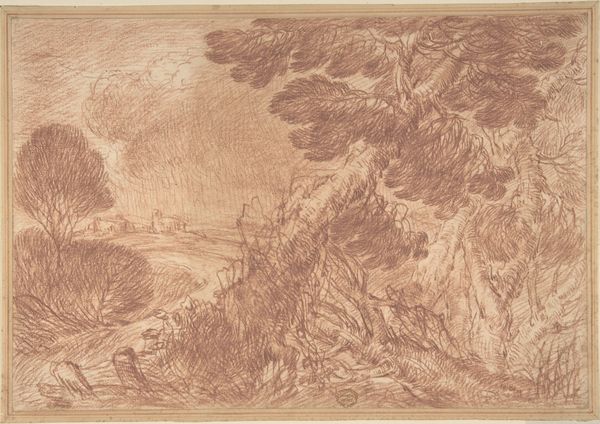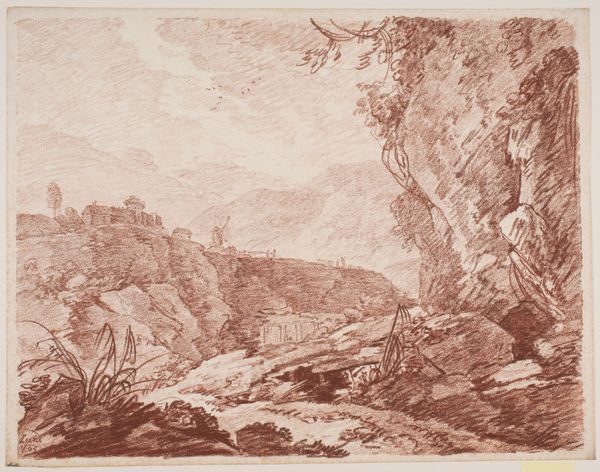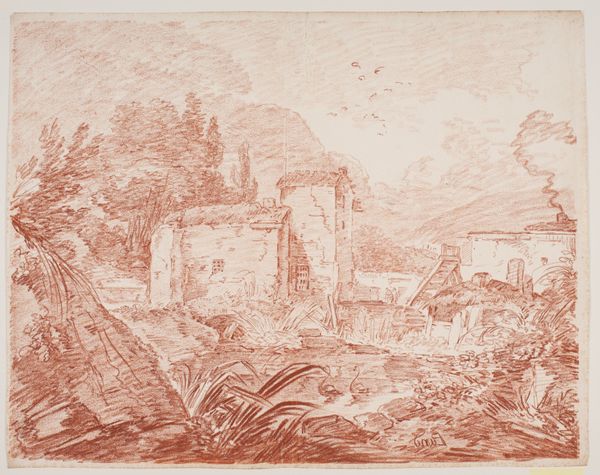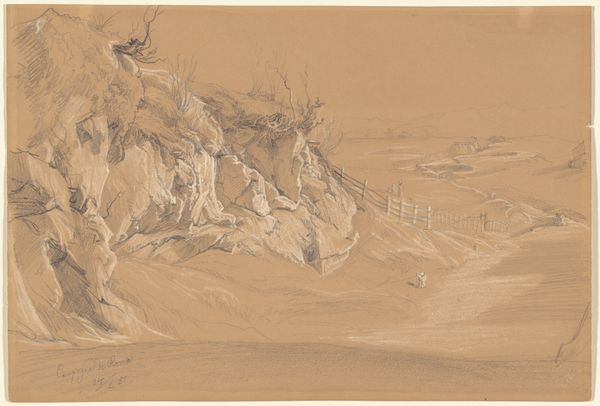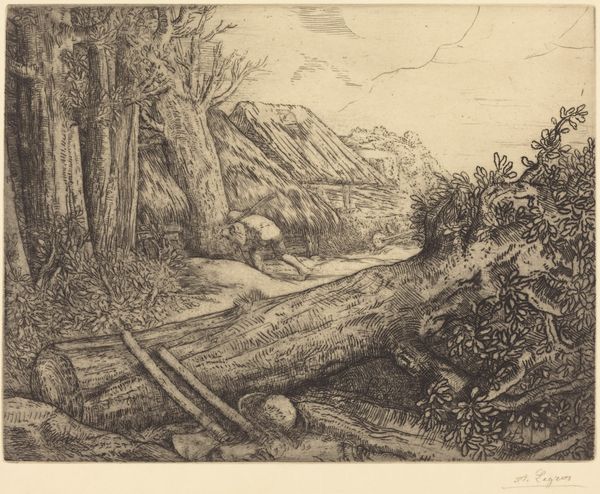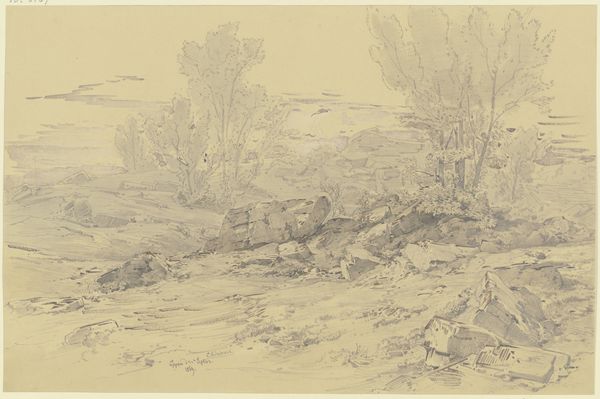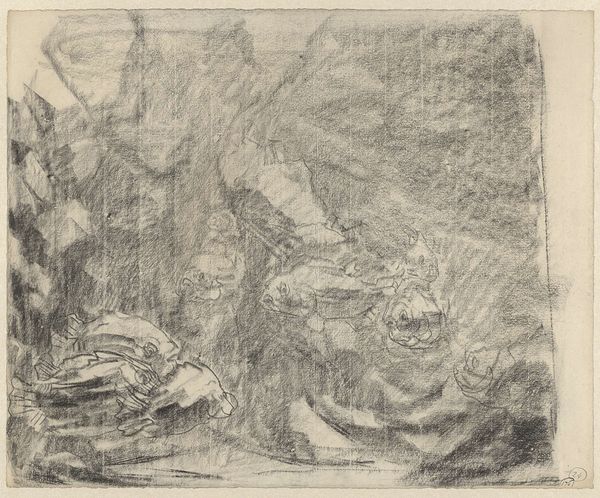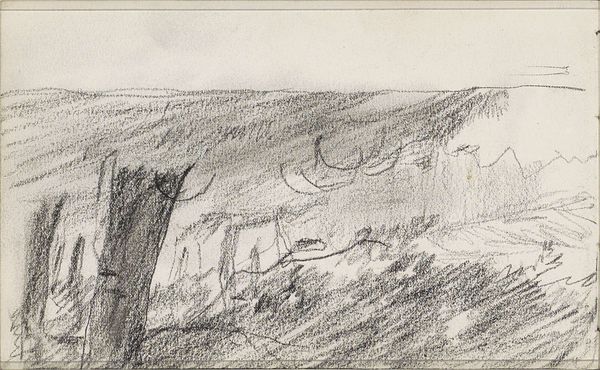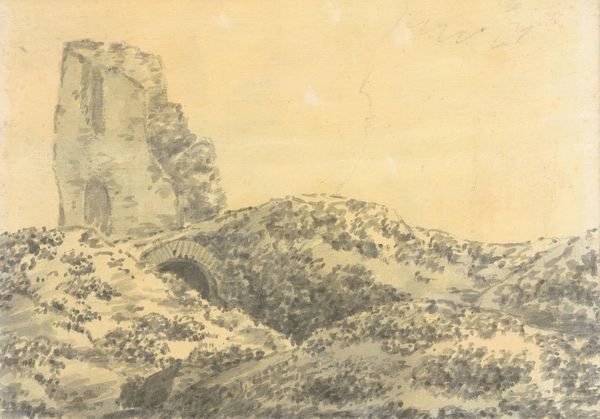
Copyright: Public Domain
Hubert Robert’s drawing, "Draughtsman in the Ruins of the Palatine" presents an evocative scene rendered with sanguine, or red chalk. The composition uses layering and diagonal lines to create a sense of depth and decay. The ruins are not merely a backdrop but a dominant presence, shaping the narrative. Robert’s strategic use of line and shading divides the drawing into distinct planes, emphasizing the contrast between the natural and the artificial. The figures, dwarfed by their surroundings, suggest a contemplation of time and the transience of human achievement. The draughtsman, presumably Robert himself, sketching amidst the ruins, invites us to consider the act of representation and the artist's role in interpreting history. The drawing employs a semiotic system where the ruins symbolize the passage of time, and the act of drawing embodies the desire to capture and understand history. The choice of sanguine adds warmth and lends an atmospheric quality, inviting us to reflect on the dialogue between past and present. Robert’s work invites us to engage with the complex relationship between art, history, and memory.
Comments
stadelmuseum almost 2 years ago
⋮
The 'Draughtsman in the Ruins of the Palatine', an undated drawing by French artist Hubert Robert, must have been produced in Rome between 1760 and 1765. Without having completed the usual academic training in Paris, Robert had gone to Italy in 1754 at the age of twenty-one and had lived in Rome, the international art metropolis of the eighteenth century, for more than ten years until 1765. It was here that he became friends with Jean-Honoré Fragonard; and it was here, too, that he came under the influence of Giovanni Paolo Panini (1699-1765) and Giovanni Battista Piranesi (1720-1778) and produced his pictures of ruins and architecture, which soon attracted the attention of the collectors of early Classicism with their enthusiasm for antiquity. Robert created vedute of Rome - staged 'capricci' which owed as much to the artist's imagination as they did to reality, and which were frequently combined with witty genre scenes.Hubert Robert left an extensive oeuvre of drawings. The old inventory of the Collection of Prints and Drawings includes outstanding watercolours and washed ink drawings. But it was only a few years ago that the Städel was able to acquire one of Robert's drawings in red chalk - a popular drawing material in the eighteenth century and one that Robert also favoured. With the soft stick of reddish-brown chalk, he was able to create rough, clay-like hatching to reproduce the mood of an atmosphere permeated by bright sunlight.Robert has depicted a rough, rocky terrain in front of the ruins of an ancient wall with massive round arches. An uprooted tree trunk crosses the picture like an improvised bridge. Standing behind it, a ladder leads up to the proliferating scrub cascading down from the masonry. The draughtsmen who have positioned themselves in the foreground seem to be concentrating equally on the remnants of antiquity as well as on nature. The situation corresponds to the study of drawing as it was practised in Robert's day in the urban landscape of Rome and its surroundings, and as it was expressly required of scholarship holders in Rome under the then director of the Académie de France, Charles-Joseph Natoire (1700-1777).The quality of his numerous paintings and drawings of landscapes with ruins earned Robert the title of "peintre des ruines", an epithet specially created for him after his return to Paris. It was as the "painter of ruins" that he was admitted to the Royal Academy of Art in Paris in 1766.
Join the conversation
Join millions of artists and users on Artera today and experience the ultimate creative platform.
